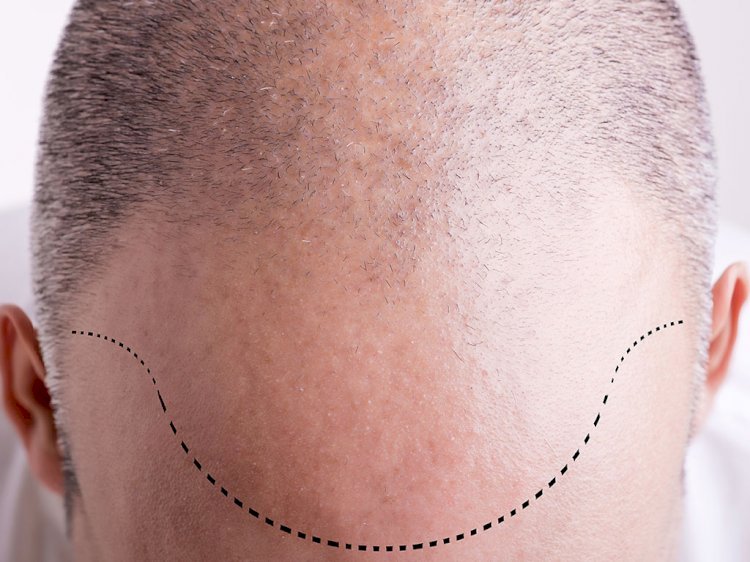Good News For Baldness: Hair Cloning News In 2020 – When Is It Available? – Part 1
This is what you needed to know about hair cloning. What can be the results of it? Here is explained the procedure in detail.

Hair Cloning For Hair Loss
Currently being researched for the treatment of hair loss, hair cloning and hair multiplication are novel technologies.
Cultivating multiple copies of them in vitro is the concept of cloning hair to extract healthy hair follicle cells from a patient. As it is here that they resume their normal growth, with the multiplied cells being then placed back into the balding scalp.
The process of hair cloning is broken down in this post. When you might expect to see hair cloning procedures become available to the public, here then we recap the latest research on the topic.
Further down the article, you can find out about the hair regrowth story as well as the 10 steps that helped grow the hair again.
What is Hair Cloning (Hair Multiplication)?
Proposed to work along similar lines to actual cloning is hair multiplication: of a biological entity, is the creation of identical copies.
Hair multiplication is about making massive numbers of copies of individual hairs whereas cloning usually involves making copies of entire organisms.
When it comes to hair, hair cloning/hair multiplication are used as umbrella terms at this point. To note no standard method comes yet as this is a technology that is still in its infancy. Regardless of which clinic you visit, unlike existing hair transplants it is where you will then get one of the same two basic methods of (FUE or FUT).
Pursuing their own often very different versions of hair multiplication in hair cloning are we still at a stage where various research centres and companies around the world are. Still up for grabs are which one of these different technologies will eventually mature first and come to dominate the market.
Here comes a difference that is fundamental setting apart all of the hair multiplication technologies starting from the hair transplants already available but then regardless of the particular technology used.
Redistributing the existing number of healthy hair follicles on your scalp is the standard hair transplants of today. Planting them into balding areas, they do this by removing follicles from the hairy areas in the back and sides of the head the so-called donor areas.
Only so many follicles can be removed before the hair density in the donor area drops to cosmetically unacceptable levels as there are clear limits to this process.
To increase the total number of follicles on your scalp, hair multiplication uses the existing hair follicles. To how many times a single follicle can be multiplied, there are no theoretical limits.
Holding the promise of unlimited hair is hair multiplication quite literally.
A hair multiplication process could be able to restore a full head of hair so in principle even if you are completely bald Norwood 7.
Involving hair follicle stem cells is a major focus in many of the hair multiplication technologies. Having the ability to develop and multiply into any different number of cell types, these are undifferentiated cells according to the type of treatment they undergo. These are therefore including those skin cells, sebaceous gland cells, as also new hair follicles.
With the use of the patient’s own cells to treat a medical problem, hair multiplication is a special case of cell therapy. As we know it has been decades since we have already had these cell therapies in other diseases. After it has been damaged by chemotherapy, for example in the treatment of various blood cancers, where the patient’s own cells are used to essentially recreate the entire immune system.
Cell therapy is now being explored for the treatment of non-threatening cosmetic conditions as it's only to be expected that with the constant advance of technology. Similar to hair loss.
What Are The Advantages Of Hair Cloning?
Mentioned here are the three popular ways used to treat thinning as well as balding at the moment.
Using an FDA-approved medication such as Rogaine or Propecia is the first. Though there is a risk of adverse effects including impotence in the case of finasteride, and contact dermatitis with minoxidil, these drugs are effective.
As we move on, by no means are their new treatments as to have been on the market for many decades now despite the deceptive advertisement continued to be used by many expensive hair loss clinics.
Involving the use of tonics or other hair products with natural ingredients such as pygeum, and saw palmetto extract is a second popular treatment. There is a limit to how much new hair they can grow as these works via natural means.
Undergoing a hair transplant surgery is a third and potentially more lasting solution. Earlier, we mentioned the limits of these procedures. As they often leave scarring, they are also very costly.
The Conclusion
In the following hair cloning is likely to be preferable to all of these methods:
Minimal risk of visible scarring happens
No hidden side effects
Comparatively short procedure.
It is found to be that this limiting factor is not the number of healthy follicles present in the donor area.
We have to take into account if it is female pattern hair loss or other conditions like alopecia areata, to be equally effective for women.
Theoretically yielding permanent results is to top it off a successful hair cloning procedure.
What's Your Reaction?





















